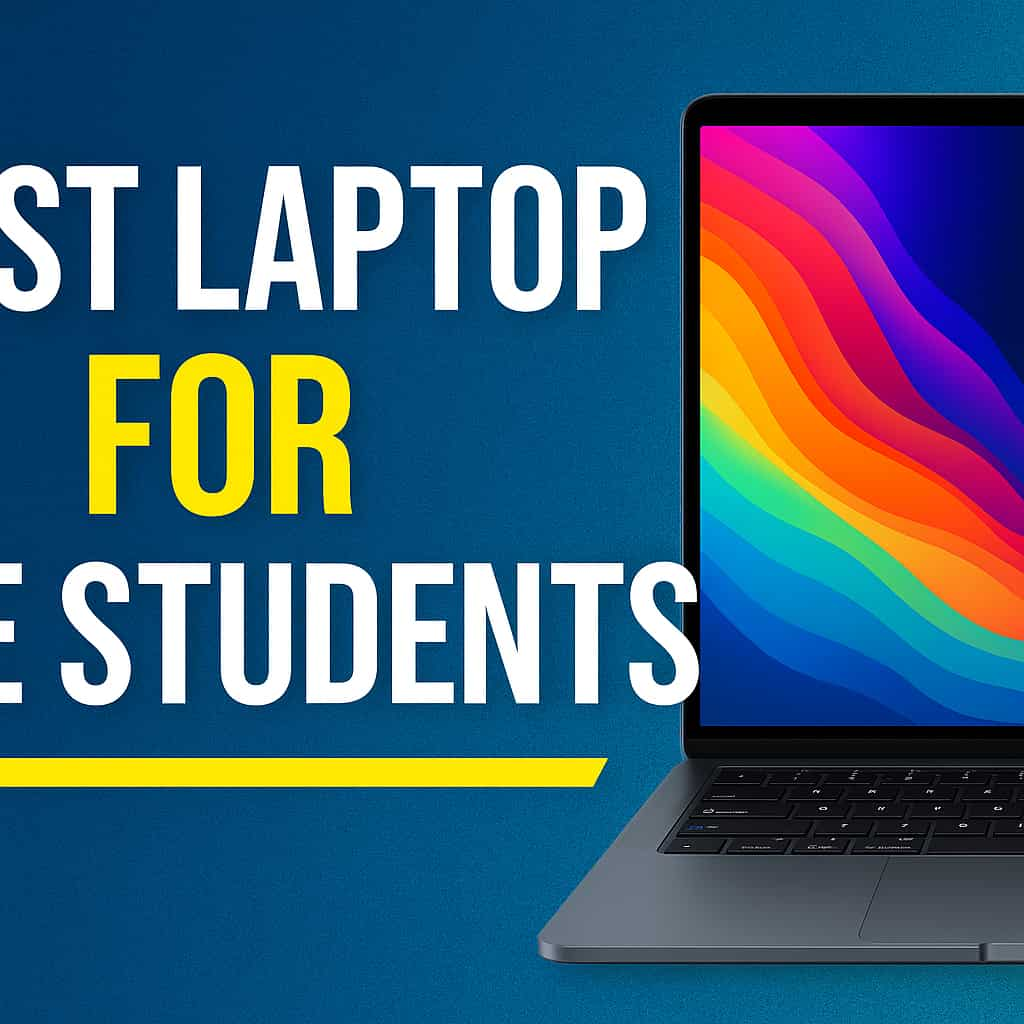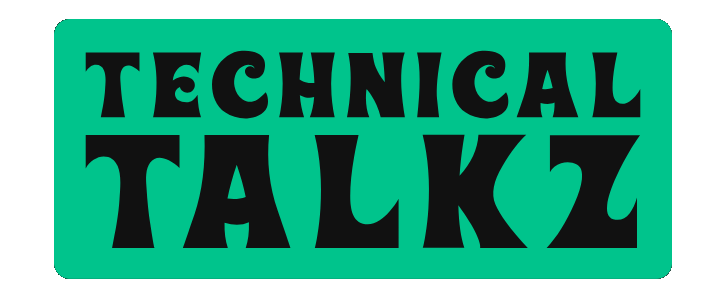For students in Computer Science & Engineering, a laptop isn’t just a gadget—it’s your daily workspace, coding environment, multimedia station, and social connector. You’ll use it for tasks like:
- Writing code in IDEs (e.g., VS Code, IntelliJ)
- Running virtual machines or Docker images
- Compiling large codebases
- Data structures, algorithm simulations, and machine learning
- Writing papers, taking notes, and attending Zoom lectures
That means your laptop needs a balance of performance, portability, battery life, reliability, and price. Ahead, I break down the key specs you should look for and recommend standout models in each budget category, from under $600 to pro-grade machines. Let’s go!
🔑 What Specs Should CSE Students Prioritize?
- Processor (CPU)
- Minimum: Intel Core i5 or Ryzen 5 (13th Gen / 7000 series)
- Ideal: Core i7 / Ryzen 7 or Apple M-series for future-proofing performance.
- Memory (RAM)
- Absolute minimum: 16 GB. Compiler-heavy projects, virtual machines, and multitasking demand it.
- Pro-level: 32 GB+ for heavy data science, ML, or running multiple VMs.
- Storage (SSD)
- Minimum: 512 GB NVMe SSD—fast boot times and enough space for data and code.
- Ideal: 1 TB if budget allows.
- Display
- Size: 13–16″ balance portability and coding comfort.
- Quality: Full HD minimum—better is OLED or QHD for sharpness and color.
- Keyboard & Trackpad
- Comfortable typing is critical for long coding sessions. ThinkPads, XPS, and MacBooks have excellent keyboards.
- Battery Life
- Aim for 8+ hours real-world usage, ideally up to 12–20 hours for all-day uptime.
- Portability
- Weight under 4 lbs (1.8 kg) is ideal for lugging between classes.
- Operating System Compatibility
- Windows/Linux universal; macOS great for iOS development and some ML libraries.
🏆 Best Overall: Dell XPS 15
- CPU: Intel Core i7–13700H / i9
- RAM: 16–32 GB
- Storage: 512 GB–1 TB SSD
- Display: 15.6″ OLED 4K (3840×2400)
- Battery: ~10–12 hrs
- Weight: ~4 lbs
- Why it’s great: Packed with power, stunning display, and top-tier build—perfect for full-stack developers, data scientists, or UI/UX students. Widely praised as a programming powerhouse .
💼 Best for Portability: Lenovo ThinkPad X1 Carbon Gen 13
- CPU: Intel Core Ultra 7 (13th Gen)
- RAM: 16–32 GB (LPDDR5x)
- Storage: 512 GB–2 TB
- Display: 14″ OLED or WQHD
- Battery: 18–20 hrs
- Weight: ~2.5 lbs
- Why it’s great: Legendary for build quality, robust keyboard, Linux compatibility, and long battery life. Ideal for business-oriented CSE students .
🍏 Best for macOS & iOS Dev: MacBook Pro (14″/16″, M3 Pro/Max)
- CPU/GPU: Apple M3 Pro or M3 Max
- RAM: 16–64 GB unified
- Storage: 512 GB–2 TB (upgradable)
- Display: Liquid Retina XDR (3024×1964 / 3456×2234)
- Battery: Up to 22 hrs
- Weight: 3–4 lbs
- Why it’s great: Incredible performance-per-watt, ideal for ML, mobile app dev, or creative coding. Top pick for macOS developers .
💵 Best Budget Pick: Acer Aspire 5
- CPU: Intel Core i5/i7 (13th Gen)
- RAM: 8–16 GB
- Storage: 512 GB SSD (upgradable)
- Display: 14–17″ FHD
- Battery: ~6–8 hrs
- Weight: 1.7–2.2 kg
- Why it’s great: Great value for money—solid build, adequate performance for coding, and room to upgrade RAM/storage. Perfect freshman starter machine.
💻 Best 2-in-1 Convertible: HP Spectre x360 (14″ or 16″)
- CPU: Intel Core Ultra 7
- RAM: 16 GB
- Storage: 512 GB SSD
- Display: 13.5–16″ OLED touchscreen
- Battery: 13–16 hrs
- Weight: ~3 lbs
- Why it’s great: Flexible tablet mode, excellent OLED display, and plenty of performance. Ideal for front-end developers or note-taking students .
🕹️ Best Gaming + Dev Hybrid: Asus ROG Zephyrus G14
- CPU: AMD Ryzen 9 8900HS
- GPU: NVIDIA RTX GPU
- RAM: 16–32 GB
- Storage: 1 TB SSD
- Display: 14″ QHD+ 165 Hz
- Battery: ~12 hrs
- Weight: ≈3.5 lbs
- Why it’s great: Ideal for game developers or those who code and play—powerful CPU/GPU combo in a compact form .
💼 Best Repairable & Modular: Framework Laptop 13 (2025 Edition)
- Why it’s great: Designed for repairability—every part is user-replaceable. Ideal for tech-savvy students who like to tinker, with solid performance and sustainability .
🖥️ Best Creator Focus: MSI Prestige 16 AI Evo
- CPU: Intel Core Ultra 7 155H
- RAM: 32 GB
- Storage: 1 TB SSD
- Display: 16″ 4K OLED
- Battery: ~19 hrs
- Why it’s great: Stunning display, strong performance, and long battery life—perfect for coding, design, and content creation .
🏅 Best Ultralight Windows: Acer Swift 3 / Swift 5
- CPU: Ryzen or Intel Evo Core i7
- RAM: 16 GB
- Storage: 512 GB SSD
- Display: 14″ FHD/OLED
- Battery: 15–24 hrs depending on configuration
- Why it’s great: Lightweight, portable, and powerful for its class—ideal for students who value portability.
💡 Other Solid Contenders
- Dell XPS 13 / XPS 17: Premium Windows builds with strong CPUs and OLED/QHD displays .
- Microsoft Surface Laptop 7th Gen: Great build, Copilot AI integration, ARM and Intel options .
- HP EliteBook 650 G10: Durable business laptop with excellent Linux support .

📊 Quick Comparison Table
| Laptop | Best For | CPU / RAM / Storage | Display | Battery | Weight | Price Range |
|---|---|---|---|---|---|---|
| Dell XPS 15 | Full-stack/data-dev, pro student | i7–i9 / 16–32 GB / 1 TB | 15.6″ OLED 4K | ~10–12 hrs | ~4 lbs | $1,500–$2,500 |
| Lenovo ThinkPad X1 Carbon Gen 13 | Portability, Linux users | Ultra 7 / 16–32 GB / 1 TB | 14″ OLED or WQHD | ~18–20 hrs | ~2.5 lbs | $1,400–$2,000 |
| MacBook Pro 14 / 16 (M3 Pro/Max) | macOS / iOS / ML dev | M3 Pro/Max / 16–64 GB | Liquid Retina XDR | up to 22 hrs | 3–4 lbs | $1,600–$3,000 |
| Acer Aspire 5 | Entry programming budget | i5/i7 / 8–16 GB / 512 GB | 14–17″ FHD | ~6–8 hrs | 1.7–2.2 kg | $500–$800 |
| HP Spectre x360 | 2-in-1 versatility | Ultra 7 / 16 GB / 512 GB | OLED Touchscreen 14–16″ | ~13–16 hrs | ~3 lbs | $1,300–$1,800 |
| Asus ROG Zephyrus G14 | Coding + gaming / GPU dev | Ryzen 9 / 16–32 GB / 1 TB | 14″ QHD+ 165 Hz | ~12 hrs | 3.5 lbs | $1,300–$1,600 |
| MSI Prestige 16 AI Evo | Content creation + programming | UL7 155H / 32 GB / 1 TB | 16″ 4K OLED | ~19 hrs | 3.3 lbs | $1,700–$2,200 |
| Acer Swift 3 / 5 | Ultralight Windows | i7 / 16 GB / 512 GB | 14″ FHD / OLED | 15–24 hrs | 2–3 lbs | $700–$1,200 |
🧭 Choose the Right Laptop Based on Your Needs
- On a budget (<$800): Go with the Acer Aspire 5. It gives you solid CPU/RAM and room to upgrade.
- Portable and long-lasting: Pick the ThinkPad X1 Carbon for comfort and insane battery life.
- Mac advantage (iOS/ML): Go all in with the MacBook Pro M3 Pro/Max—premium but worth it.
- Convertible flexibility: The HP Spectre x360 gives you laptop + tablet versatility.
- Gaming & GPU dev: The Asus ROG G14 is powerful yet travel-friendly.
- Content creation + coding: MSI Prestige 16 nails performance and display, ideal for creators.
- Ultralight daily carry: Choose Acer Swift 3/5 for portability and efficiency.
🎯 Final Buying Tips
- RAM is king: Don’t settle for less than 16 GB. Ideally 32 GB if your budget allows.
- SSD space: 512 GB is minimum—1 TB is recommended.
- Test keyboards in person—especially if you code long hours.
- Ports matter: Ensure at least one USB-A, USB-C, and/or HDMI.
- Battery claims vs reality: Run real-world tests—laptops often underperform under heavy loads.
- Warranty & service: Student pricing, on-campus service, and battery replacements are worth considering.
🛠️ After Purchase: Essential Student Setup
- Install Linux or WSL (on Windows) for compatibility with educational tools.
- Set up Git, Docker, Node.js, Python, Java, and Latex.
- Back up work with Dropbox, Google Drive, or GitHub.
- Invest in a laptop sleeve, USB-C hub, extra charger, and mouse.
✅ In Summary
- 🥇 Best overall: Dell XPS 15
- 🥈 Best portable: ThinkPad X1 Carbon Gen 13
- 🥧 Best macOS: MacBook Pro M3
- 💸 Best budget: Acer Aspire 5
- 🔄 Best 2‑in‑1: HP Spectre x360
- 🎮 Best gaming + dev: Asus ROG G14
- 🎨 Best for creators: MSI Prestige 16
- 🧳 Best ultralight: Acer Swift 3/5
Choose based on your budget, coding needs, portability requirements, and whether you’re in the Apple ecosystem. No matter what you pick, focus on the CPU, RAM, SSD, display, and battery—they’ll define your student experience.


